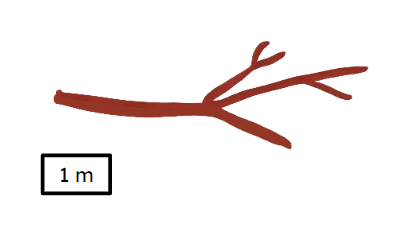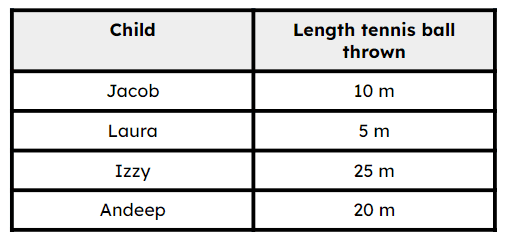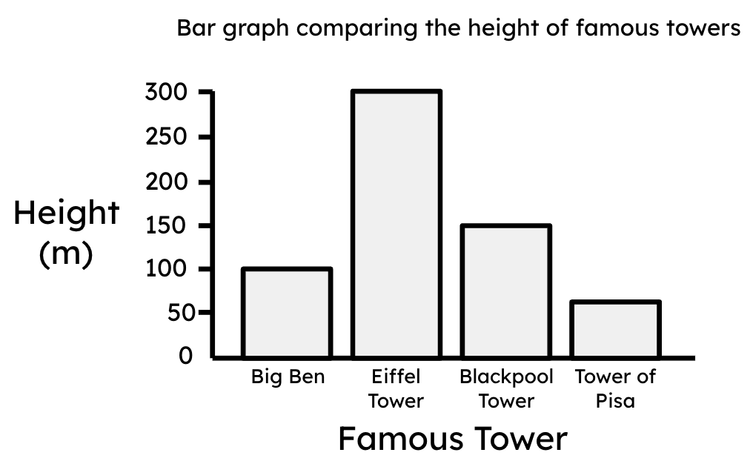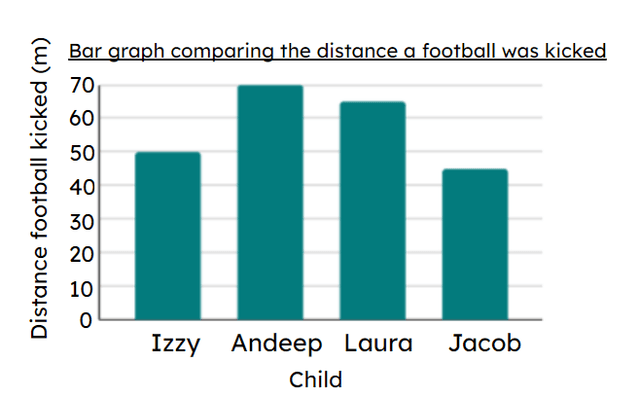Myths about teaching can hold you back
- Year 3
- Year 3
Solve problems involving length
I can solve problems involving length.
These resources will be removed by end of Summer Term 2025.
Switch to our new teaching resources now - designed by teachers and leading subject experts, and tested in classrooms.
These resources were created for remote use during the pandemic and are not designed for classroom teaching.
Lesson details
Key learning points
- Data can be collected to help solve a problem involving length.
- When we collect data, we need to decide which units to measure in: mm, cm or m.
- Representing data as a bar graph can help us interpret the data.
Keywords
Data - Data is a collection of facts, such as numbers, words, measurements, observations or even just descriptions of things.
Interpret - When we interpret anything, including data, we explain its meaning.
Common misconception
Drawing tables and graphs from scratch can be tricky for some children.
Provide scaffolds of tables and graphs where necessary.
To help you plan your year 3 maths lesson on: Solve problems involving length, download all teaching resources for free and adapt to suit your pupils' needs...
To help you plan your year 3 maths lesson on: Solve problems involving length, download all teaching resources for free and adapt to suit your pupils' needs.
The starter quiz will activate and check your pupils' prior knowledge, with versions available both with and without answers in PDF format.
We use learning cycles to break down learning into key concepts or ideas linked to the learning outcome. Each learning cycle features explanations with checks for understanding and practice tasks with feedback. All of this is found in our slide decks, ready for you to download and edit. The practice tasks are also available as printable worksheets and some lessons have additional materials with extra material you might need for teaching the lesson.
The assessment exit quiz will test your pupils' understanding of the key learning points.
Our video is a tool for planning, showing how other teachers might teach the lesson, offering helpful tips, modelled explanations and inspiration for your own delivery in the classroom. Plus, you can set it as homework or revision for pupils and keep their learning on track by sharing an online pupil version of this lesson.
Explore more key stage 2 maths lessons from the Measuring length and recording in tables unit, dive into the full primary maths curriculum, or learn more about lesson planning.

Licence
Prior knowledge starter quiz
6 Questions
Q1.Which measuring unit would you use to measure the height of a kitten?
Q2.Estimate the length of this branch.

Q3.Look at this table. Starting with the child who threw the shortest distance, order the children by how far they threw the tennis ball.

Q4.Look at the bar graph comparing the height of some famous towers. Match the tower to its height.

100 m
300 m
150 m
60 m
Q5.Look at the bar graph comparing the height of some famous towers. Which tower is the tallest?

Q6.Look at the bar graph comparing the height of some famous towers. How much taller is the Eiffel Tower than the Leaning Tower of Pisa (which is 60 m tall)?

Assessment exit quiz
6 Questions
Q1.Explaining the meaning of something, such as data is known as .
Q2.Laura is wondering if the famous towers that she knows are all taller than 100 m. Match the part of the data handling cycle to what Laura will need to do.
All famous towers are taller than 100 m.
Research into the heights of towers, given in metres.
Draw a bar graph to compare their heights.
Do all the towers have bars that are taller than 100 m?
Q3.Look at the graph comparing the heights of the famous towers. Are all towers taller than 100 m?

Q4.Andeep wants to know if all children in his Year 3 class can kick a ball further than 30 m. Starting with the first step, order these statements to help Andeep decide what he needs to do.
Q5.Looking at the graph that Andeep drew, what can you interpret? Tick each option that is a correct interpretation.

Q6.Looking at the graph that Andeep drew, did all children kick the ball further than 30 m?



